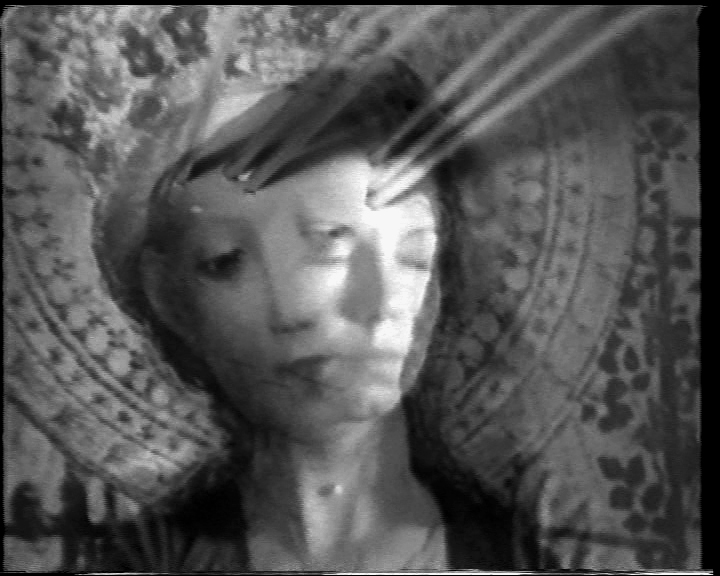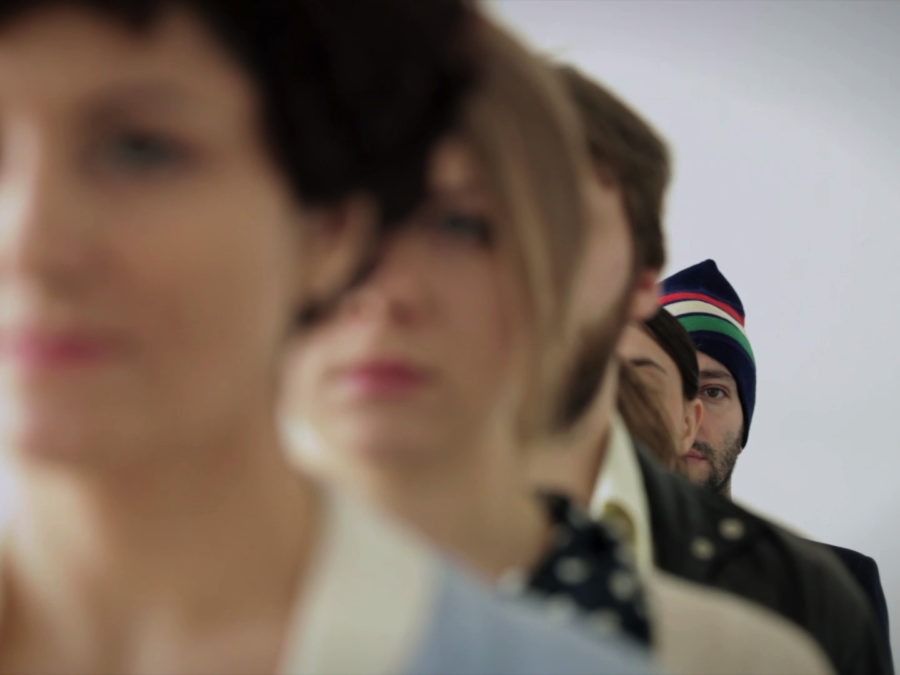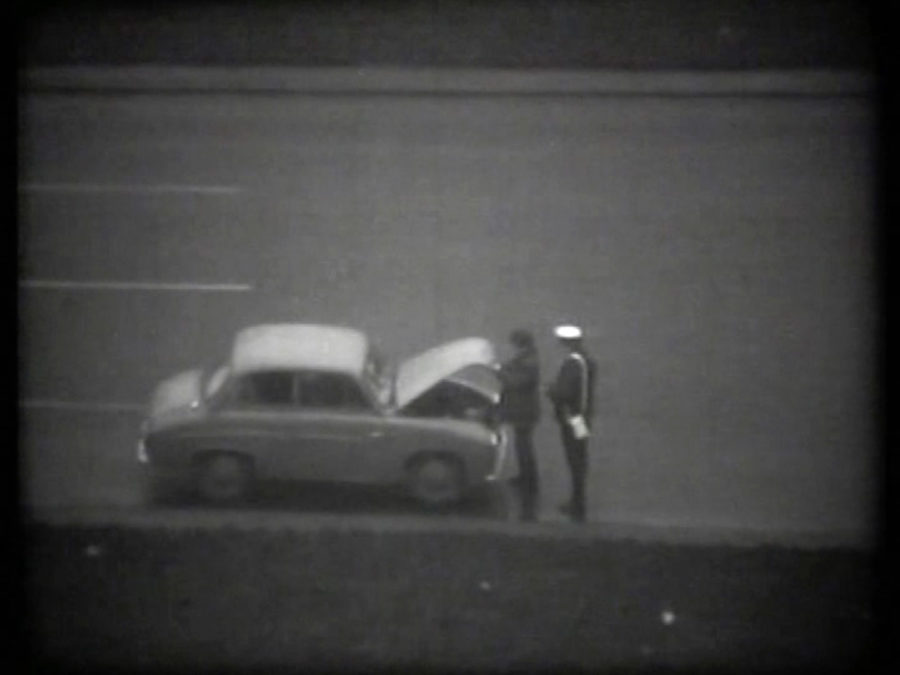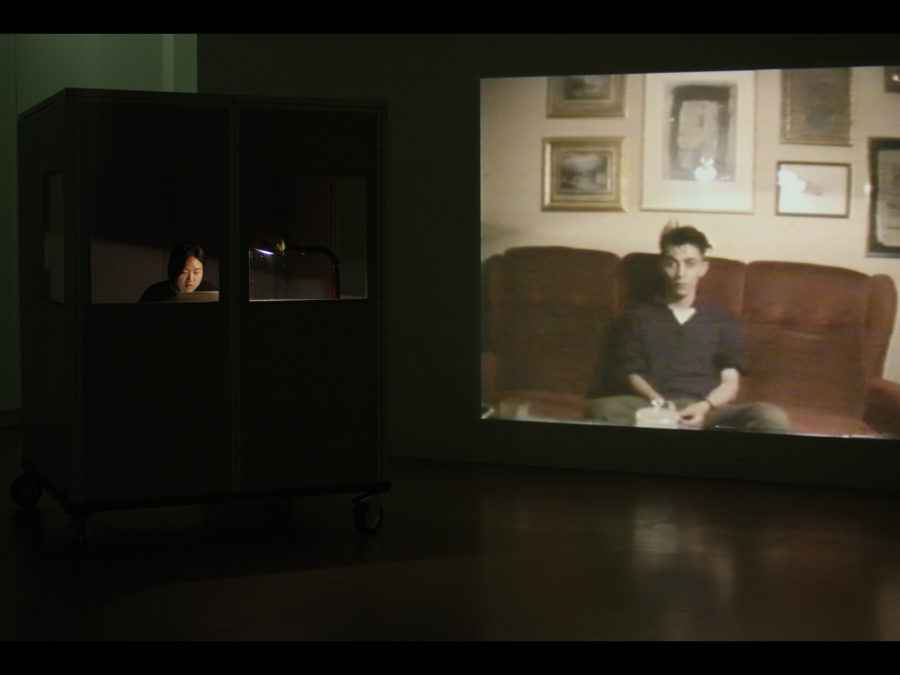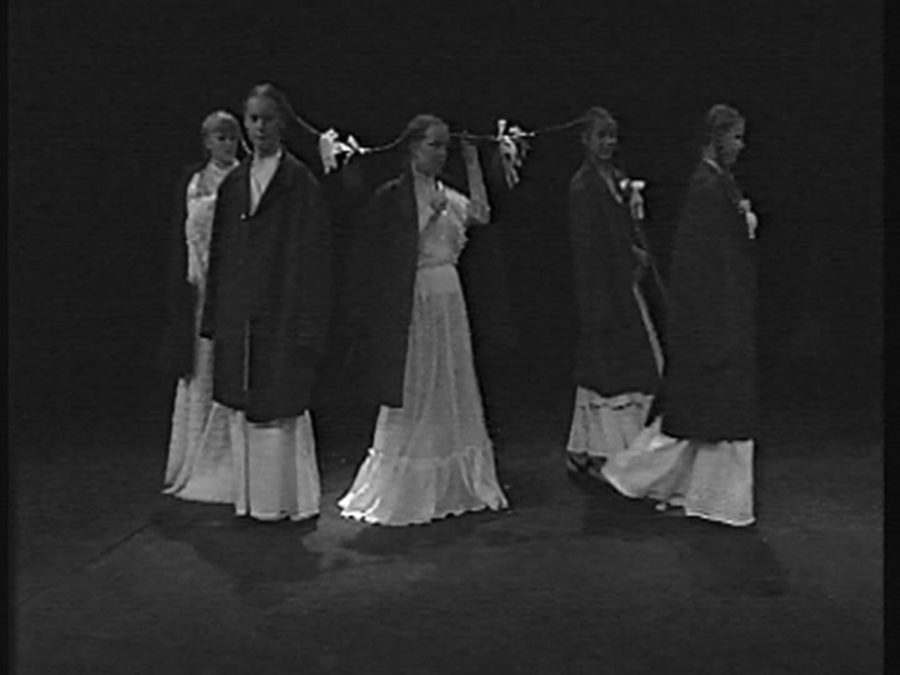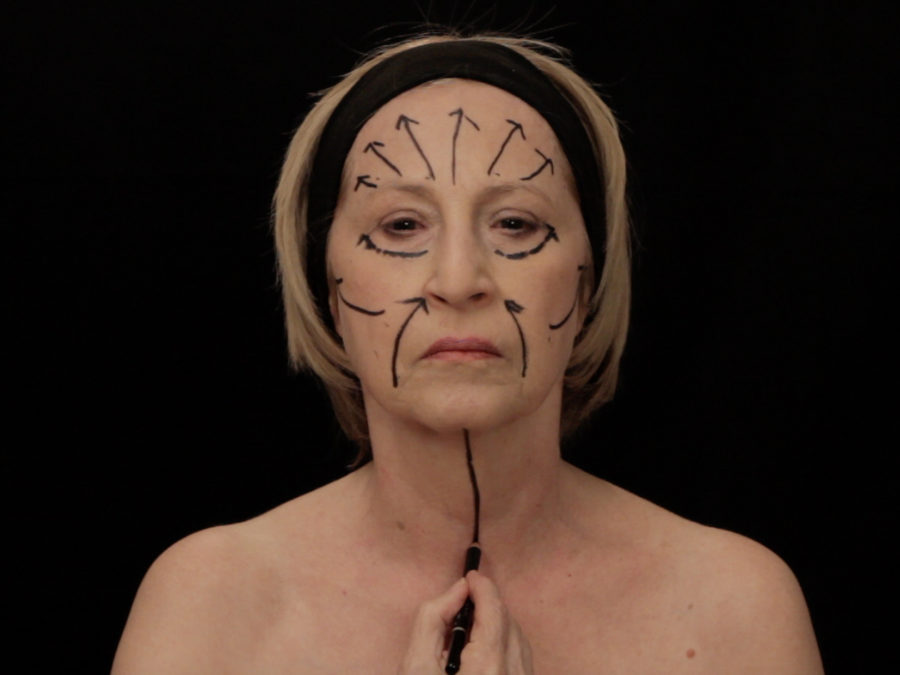In Glauben Sie nicht, dass ich eine Amazone bin. (eng.: Do not believe I am an Amazon. / Don’t you believe that I am an Amazon.), Ulrike Rosenbach evokes the history of female representation since ancient Greece. A closed-circuit-video projects the face of the artist and a cutout reproduction of Stefan Lochner’s Madonna of the Rose Bower (1448) onto one another. The video-portrait of the 33-year-old artist practicing archery animates the icon of the holy virgin. Rosenbach shoots fifteen arrows into the face of the Madonna and simultaneously into herself. Representing the allegorical roles of women* as “mothers, housewives, prostitutes, saints, virgins, or Amazons,” the Madonna also evokes the myth of the Greek goddess Artemis. This work auto-poetically produces and assaults the entanglement of societal role models and their transformation through time. Ulrike Rosenbach was early to discover the emancipatory potential of the medium of video. Her work deals with the radical autonomization of its producers. Here, the process of creation allows for the producer to control the image while filming and to concurrently examine the camera monitor and control their self-presentation.
Ulrike Rosenbach studied at Düsseldorf Academy of Fine Arts, and is considered one of the first German women artists to deploy the medium of video in her work. In her videos, performances, and multimedia installations, she explores the complexity of female representation. She created her first video works in 1971, taught feminist and media art at the California Institute of Arts (CalArts), and founded the “School for Creative Feminism” in Cologne. Together with Klaus vom Bruch and Marcel Odenbach, Rosenbach developed new ways of distributing video art. Under the name “Alternative Television,” they published their work illegally on free TV frequencies as a way of operating autonomously from state channels. A-TV was able to reach a radius of 100 meter and distributed flyers in the local area to announce the pirate channel program. Besides having participated at documenta 6 and 8 (1977, 1987), Rosenbach has also had a major retrospective at the Landesmuseum Bonn (2014) and received the Gabriele Münter Preis in 2004.
